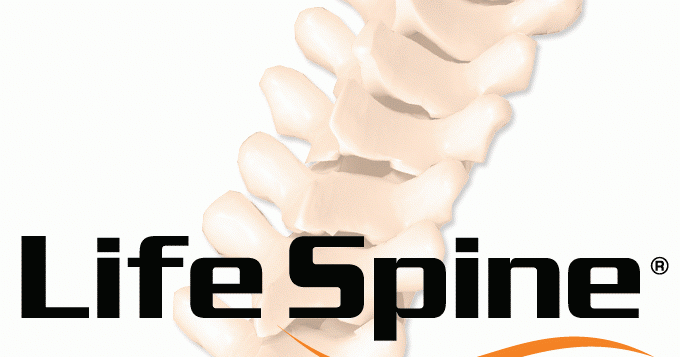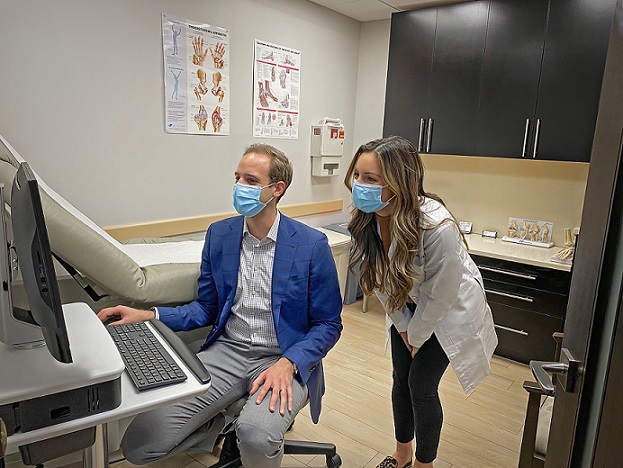Elizabeth Hofheinz, M.P.H., M.Ed.
What happens when two spine surgeons go over their peers’ work with surgical precision? Ideally, more clarity. However, as two spine surgeons are finding, that is not always the case.
Ten years ago, Alexander R. Vaccaro M.D., Ph.D., M.B.A. was approached by the editor of Spine, James Weinstein, and asked to perform regular in-depth evidence-based assessments of seminal articles published throughout the world. He did not refuse.
“There are three teams, each comprised of a spine clinician and an expert in statistics and methodology research,” said Dr. Vaccaro to OSN. “The clinicians look at things from a clinical perspective, while those with a statistical and methodological background, i.e., an M.P.H. degree (Masters in Public Health) evaluate the work from a methodological perspective. Then they send the documents to either me or Charles Fisher, M.D. of the University of British Columbia.”
Their latest “fine tooth comb” project, “Evidence-Based Advances in Spinal Care – Where Do We Stand Today?” appears in the December 1, 2020 edition of Spine.
Dr. Vaccaro: “In reviewing the literature on the current state of spine care, what was clear is that there is a lack of clarity on a variety of issues, i.e., we need more research.”
One of the issues they addressed in this paper was robotics. “Traditionally,” Dr. Vaccaro stated, “this technology has been popular because of its accuracy and decreased radiation exposure to the surgeon. But this doesn’t take into consideration that the patient is still exposed to unnecessary radiation via the preop CT and fluoroscopy. These are long-term, hidden dangers that should be accounted for.”
Ideally, says Dr. Vaccaro, this field should progress so only a preoperative MRI is necessary for registration purposes to avoid the added radiation exposure of a CT scan.
And he is rather unimpressed with the value of precision unless it effects ultimate patient outcomes. “This is a red herring, in a way. There are numerous papers indicating that pedicle screw placement does not need to be perfect…that you can still get a solid fusion with no adverse neurological consequences even if a screw is not perfectly within the pedicle.’”
The bottom line, says Dr. Vaccaro, is, “Unless we progress this technology using artificial learning strategies to improve reproducibility and surgical techniques with precision that minimize junctional degeneration and aids in rod bending and insertion and correction techniques to decrease surgical time, then this is a less than optimal expenditure of resources. I would say, however, that today robotics is very useful for revision surgeries where you are not dealing with normal anatomy or where there is an abundant fusion mass obscuring anatomical landmarks. A robot would be helpful in determining where exactly to place the screw in order to avoid important structures such as neural elements of facet joints.”
In addition to robotics, Drs. Vaccaro and Fisher examined several articles on low back pain surgery. The bottom line, says Dr. Vaccaro, is that there is no Holy Grail for reproducibly improving low back pain. “Interestingly, the only well performed studies demonstrating the effectiveness of surgery for low back pain were company-sponsored IDE trials assessing the efficacy of lumbar arthroplasty devices.”
“Regarding lumbar decompressive surgery for low back pain in patients with spinal stenosis, we routinely tell patients that such surgery is only designed to improve lower extremity symptoms. A Norwegian registry study demonstrated that surgery for spinal stenosis in patients with more back pain than leg pain results in less satisfactory outcomes compared to those with more significant lower extremity symptoms.”
As for performing a fusion when there is instability related to degenerative spondylolisthesis, Dr. Vaccaro points to two conflicting studies. “These articles were both published in high impact journals, furthering the lack of clarity on this point. The existing consensus is that if there is obvious instability and a decompression is contemplated, then instability may worsen, and a fusion is warranted to prevent worsening back pain and leg discomfort. The other research we reviewed, however, provided few additional insights.”
“Ideally, degenerative spondylolistheses patients need to be better categorized from an imaging and clinical perspective to determine which patients require a fusion and if so what type of fusion. Having an understanding of the most efficacious surgical approach, i.e., a posterior interbody fusion verse a front to back procedure, would minimize surgical complications and improve outcomes in the long run. So far we have no concrete answers to those questions.”
And what about the issue of junctional breakdown after the correction of adult spinal deformities? Dr. Vaccaro: “We found one study recommending an individualized approach to deformity correction, specifying that total curve correction in the sagittal plane may not be in the best interest of the patient. We surmise that this might reflect a general lack of understanding of where patients like to exist three dimensionally in space as related to issues of spinal balance. It would be helpful to have more large registry studies on the risk factors related to curve progression and junctional breakdown after surgical intervention today.”
Regarding cervical deformity surgery, Drs. Vaccaro and Fisher say there is an overarching need to more thoroughly comprehend global spinal alignment and its effect on cervical alignment. They cite a study that only considered cervical measurement parameters and found that cervical kyphosis or an increase in cervical SVA increased the potential for complications. “Unless one has a clear grasp of global spinal alignment,” cautions Dr. Vaccaro, “it is unclear if these complications are primarily related to correction of an intrinsic cervical deformity or due to the fact that an unrecognized underlying thoracolumbar deformity predisposed a procedure to fail due to disturbance of underlying compensatory cervical deformity.”
Finally, with regard to adult symptomatic lumbar scoliosis, they reviewed a study finding that reoperations following an index surgery were frequently performed as a consequence of complications known to occur after adult spinal deformity surgery such as rod fracture, pseudarthrosis and proximal junctional breakdown.
“Again, it’s back to the basics,” says Dr. Vaccaro. “We just do not have a clear understanding of the spinal alignment we should be aiming for in this type of deformity. Whether you get a pseudarthrosis and/or rod fracture are a function of the amount of stress on the fusion mass, this stress likely being lower if someone is optimally aligned…we don’t know what that looks like completely, but we are making progress with further studies on this complex topic.”




